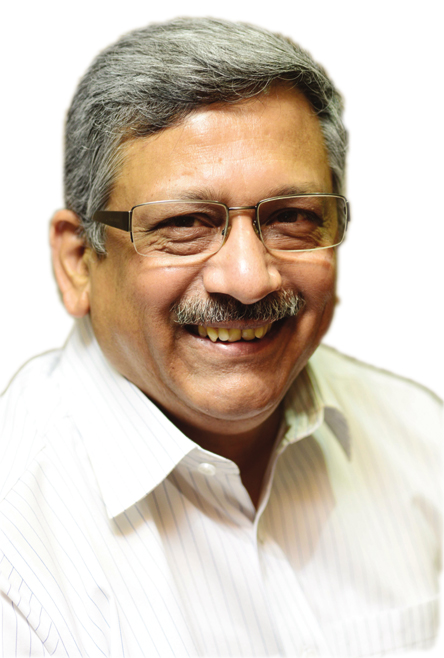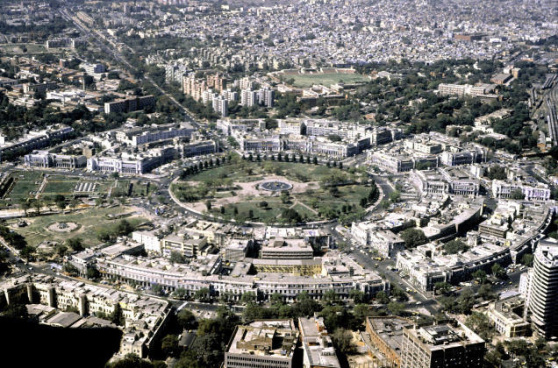
Managing Director, Jindal Hydro and Renewables
With an intention of exploring the hidden hydro power potential of the country, Jindal Steel and Power Limited has undertaken several power projects across the country. In an interview, Jayant Kawale, Managing Director, Jindal Hydro and Renewables, divulges its strategies to Gautam Debroy of ENN

Managing Director, Jindal Hydro and
Renewables
Through expansion of Jindal Steel and Power in hydro, what new you are planning to bring in? In what other renewable initiatives is the company involved? Jindal Power has started with the thermal sector and Jindal Power Limited is a 100 percent subsidiary of the Jindal Steel and Power. We have already acquired an operating capacity of 1,000MW at Tamnar in Chhattisgarh. At Tamnar itself we had taken up expansion by 2,400MW, out of which two units of 600MW have already been commissioned and commercial operation started. Third and fourth units have also been commissioned (synchronized) and the commercial operation will start soon. We have also planned other projects in the thermal sector in Andhra Pradesh and Odisha.
In 2008, our company had also said that we should not be restricted to the thermal projects and also look at other sources of power including hydro. So, in Arunachal Pradesh we got three projects, which are expected to come up in joint venture with an AP Government entity, called Hydro Power Development Corporation of Arunachal Pradesh .
Brief us about your power projects in Arunachal Pradesh. Originally, at the time of allotment, the capacity was 4,000MW for Etalin project, 500MW for Attunli project and 1,600MW hydroelectric power for Subansiri Middle. Now, after we have prepared the Detailed Project Report (DPR), these capacities have been revised. The capacity of Etalin project now stands at 3,097MW, Attunli at 680MW and Subansiri Middle (Kamla project) at 1,800 MW. We also have a small hydro project called Annonpani, which will initially supply construction power to Etalin project with a capacity of 22MW. So, that is the portfolio that we have. The DPR of two projects (Etalin and Kamla) have already been submitted to the Central Electrical Authority (CEA), of which Etalin has already been approved by the CEA, while Kamla is stillunder examination. Attunli DPR has been prepared and we will submit it shortly. Annonpani DPR has been submitted to the State government for approval. All our work for the environmental clearance has been done.
In Arunachal, there is huge hue and cry over power projects. What challenges you are facing there? At present, there are no challenges before the Etalin project. We have had extensive discussions with the affected people and addressed all their concerns to their satisfaction. Unlike in the case of Lower Subansiri, where the project touches two bordering states – Assam and Arunachal Pradesh, which caused much concern for Assam our project is about 200 km away from Assam. So, whatever effect of this project, it would not impact Assam.
 What is the employment potential of your power initiatives in Northeast? Our power projects will create employment opportunities not only in Arunachal Pradesh but also in Assam. The population in the area is so sparse that even if we appoint all of them, we will still need many more. People from the rest of the country will also get employment opportunities there. We will require good logistics and infrastructure, including river navigation, which nowadays is quite necessary. We are already working with the Inland Waterways Authority of India (IWAI) to see what facilities will be required for our logistics. All our projects will ensure that infrastructure in that part of country improves. We are in constant touch with the Ministry of Road Transport and Highways to widen and improve the roads. In telecom sector also we are working with the Ministry of Telecommunications and BSNL to ensure that mobile connectivity improves.
What is the employment potential of your power initiatives in Northeast? Our power projects will create employment opportunities not only in Arunachal Pradesh but also in Assam. The population in the area is so sparse that even if we appoint all of them, we will still need many more. People from the rest of the country will also get employment opportunities there. We will require good logistics and infrastructure, including river navigation, which nowadays is quite necessary. We are already working with the Inland Waterways Authority of India (IWAI) to see what facilities will be required for our logistics. All our projects will ensure that infrastructure in that part of country improves. We are in constant touch with the Ministry of Road Transport and Highways to widen and improve the roads. In telecom sector also we are working with the Ministry of Telecommunications and BSNL to ensure that mobile connectivity improves.
Green power “Hydro makes non-consumptive use of water, whereas in thermal, the water used is lost. Hydro has another advantage that unlike coal, it doesn’t pollute. As for wind and solar power, the later is costly and available for only about five-six hours a day, if not stored, and power from wind is highly uncertain”
Do you think India has good potential for hydro plants? How is it comparable to other genres of power plants? Compare thermal with hydro – we have reached a situation where a large portion of required coal needs to be imported. Although we have a large reserve of coal, we are not able to explore it properly due to various reasons. And, as we are dependent on coal, ultra mega power projects are running into troubles like the one Mundra is in. That’s a major cause of concern as far as thermal is concerned. Now, if you compare thermal with hydro, hydro makes non-consumptive use of water, whereas thermal consumes water, as the water used is lost. Today, hydro has a big advantage, hereas coal creates pollution.
Apart from pollution, the other aspect is disturbances to the ecology. Whenever you do any project whether it is a road project, mining, hydro or a thermal project, there will be some disturbance to the ecology. The Planning Commission has projected that by 2032, our power requirement will reach 800,000MW. So, encouraging hydro is the necessity from a long-term perspective.
If we talk about renewable power, that is wind and solar, the later takes costly devices and is available for only about five-six hours a day, if not stored in a grid. On the other hand, wind has a very uncertain story. Unlike solar power, where you can predict, in case of wind, you can’t predict about power. Its availability is greater in the Monsoon.
You have experiences the previous governments. Do you think the new government can help improve the hydro power scenario in the country? At least Mr Narendra Modi has made some statements in favour of hydro power generation in the country. He has talked about the necessities and possibilities of combining the objective of infrastructure, economic development and sustainable environment. These are positive signs, because one of the main issues of holding back the hydro power development is the uncertainty regarding our environment policy, procedures and processes. I hope the new government will see that the entire process is streamlined.





















